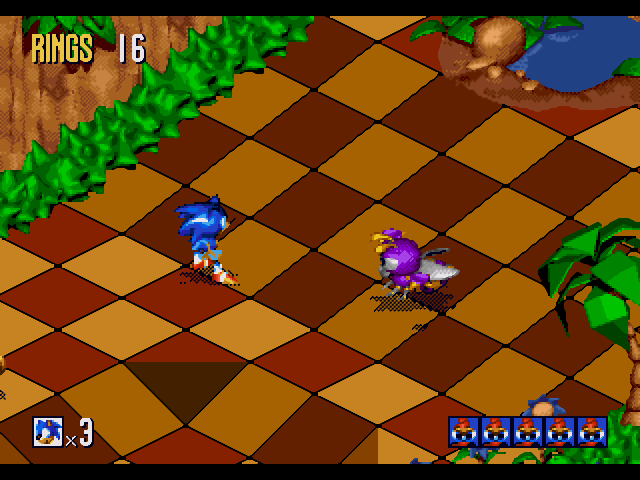

Sure there were some strange design choices, including um, Big’s fishing stages. Sonic and his buddies, new and old, finally got to explore a true 3D world. Sonic Adventure, although a lot of it certainly has not held up well, at the time of its release was revolutionary for the series. At least not in the same way as some of the other games. There are so many different version of each zone/act due to the time-traveling mechanic that none of them really end up standing out. We’re in top five of games, so we’re definitely splitting hairs, but what knocks Sonic CD a couple pegs below some of the other games higher up is that other than Stardust Speedway, the other Sonic CD stages just aren’t as memorable as ones found in the other Genesis era games. The rivalry between the two culminating with the showdown on Stardust Speedway is arguably the best and coolest boss fight in Sonic history. Sonic CD also introduced Metal Sonic, one of the most iconic Sonic villains of all-time. The game introduces a rewarding time-traveling mechanic that can be taken advantage by players seeking the true ending if they can effectively balance Sonic’s speed and platforming. However, over the years it has finally gotten proper re-release treatment thanks to the work of Sonic Mania’s Christian Whitehead, so now fans really don’t have any excuse for skipping on it.
#TOP 10 SONIC 3D FAN GAMES SERIES#
For years, Sonic CD was the true hidden gem of the series as it released only on the Sega CD Genesis add-on. Now we start getting to the real heavy hitters. Sonic Rush’s gameplay would become the staple style that would be used DS and Nintendo 3DS Sonic games that followed such as its sequel Sonic Rush Adventure, and Sonic Colors for the DS.

Blaze did (and still does) feel like a character that could reasonably fit in within the current classic paradigm of Sonic, Tails, and Knuckles, unlike some of the other bizarre characters we’ve seen throughout the years such as the aforementioned Cream and Cheese, and the walking, talking meme that is Big the Cat. In addition, it made very clever use of the Nintendo DS’s two screens and added Blaze the Cat, arguably the most underrated, and non-irritating of the new Sonic “friends” that were added in the games that followed Sonic Adventure. It deviates heavily from the classic games in terms of gameplay style allowing Sonic to use his homing attack and boost moves, but that didn’t take away from its greatness, in fact it’s still one of the best mashups of classic and modern Sonic gameplay to date.
#TOP 10 SONIC 3D FAN GAMES PORTABLE#
The Sonic Rush games, like the Sonic Advance series, were hidden gems for those that chose to ignore portable Sonic games for whatever reason. Hopefully a Generations 2 is in the cards for a release one day and we can see more of those entertaining mashups. For the most part, the selected stages were worthy of being there (would have been nice to have more than one stage from both Sonic 3 and Sonic and Knuckles, but we’ll let that slide), and it was very entertaining to see Modern Sonic blast through classic stages such as Chemical Plant Zone and likewise seeing 2D Sonic fly around City Escape. Generation’s take had much better physics and was visually impressive as well.Īlso, this was the first real attempt at remaking stages, and it was a huge success. Sonic the Hedgehog 4 tried to do it, but ultimately came up short. Add to all that, a return to form for true, 2D Sonic gameplay on home consoles. Sonic Colors and the daytime sections of Sonic Unleashed laid the foundation, but Sonic Generations was when the Modern Sonic gameplay really started to come together and was refined to a point where it was enjoyable to both fans and critics. Sonic Generations will probably be remembered as the game where the Sonic series finally turned a corner and started trending in the right direction (Sonic Boom disasters aside).


 0 kommentar(er)
0 kommentar(er)
